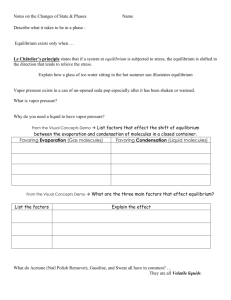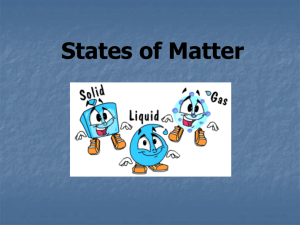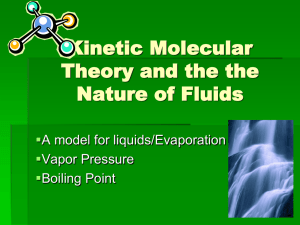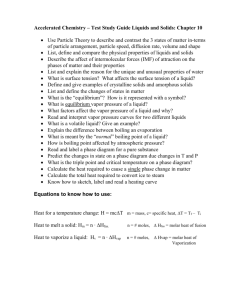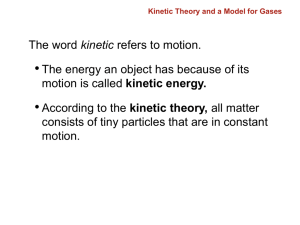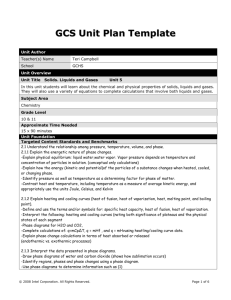The Nature of Liquids
advertisement
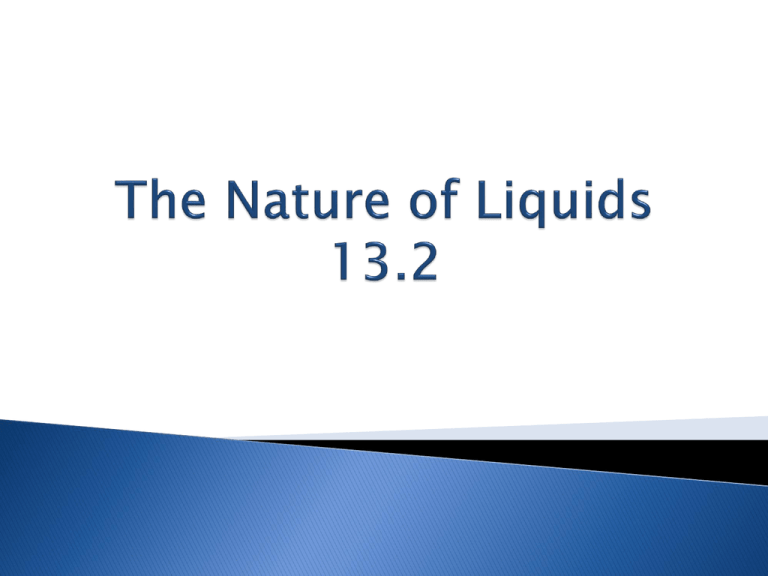
What factors determine the physical properties of a liquid? What is the relationship between evaporation and kinetic energy? When can a dynamic equilibrium exist between a liquid and its vapor? Under what condition does boiling occur? According to the kinetic theory, both the particles in gases and the particles in the liquids have kinetic energy. This energy allows the particles in gases and liquids to flow past one another. Substances that can flow are classified as fluids. The ability of gases and liquids to flow allows them to conform to the shape of their containers. There are no attractions between the particles in a gas. But the particles in a liquid are attracted to each other. The interplay between the disruptive motions of particles in a liquid and the attractions among the particles determines the physical properties of liquids. Liquids are much more dense than gases. Increasing the pressure on a liquid has hardly any effect on its volume. For that reason, iquids and solids are known as condensed states of matter The conversion of a liquid to a gas or vapor is called vaporization. When a conversion occurs at the surface of a liquid that is not boiling, the process is called evaporation. During evaporation, only those molecules with a certain minimum kinetic energy can escape from the surface of the liquid. Vapor pressure is a measure of the force exerted by a gas above a liquid. Over time, the number of particles condense and return to the liquid state. In a system at constant vapor pressure, a dynamic equilibrium exists between the vapor and the liquid. The system is in equilibrium because the rate of evaporation of liquid equals the rate of condensation of vapor. An increase in the temperature of a contained liquid increases the vapor pressure. The vapor pressure of a liquid can be determined with a device called a manometer. When a liquid is heated to a temperature at which particles throughout the liquid have enough kinetic energy to vaporize, the liquid begins to boil. The temperature at which the vapor pressure of the liquid is just equal to the external pressure on the liquid is the boiling point. Because a liquid boils when its vapor pressure is equal to the external pressure, liquids don’t always boil at the same temperature. Because a liquid can have various boiling points depending on pressure, the normal boiling point is defined as the boiling point of the liquid at a pressure of 101.3 kPa. Because a liquid can have various boiling points depending on pressure, the normal boiling point is defined as the boiling point of the liquid at a pressure of 101.3 kPa.
